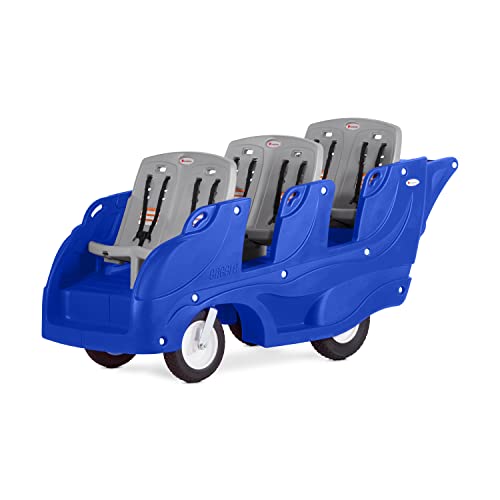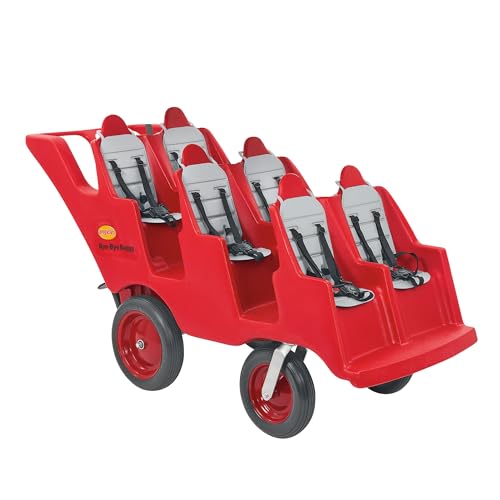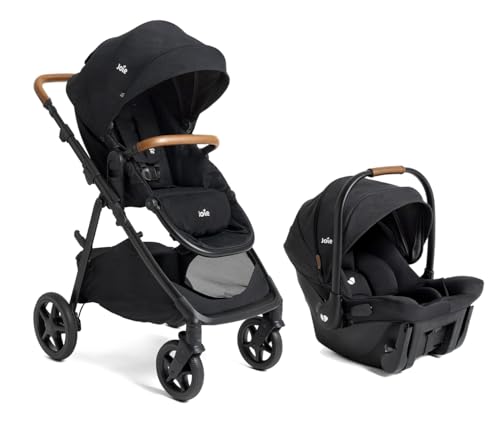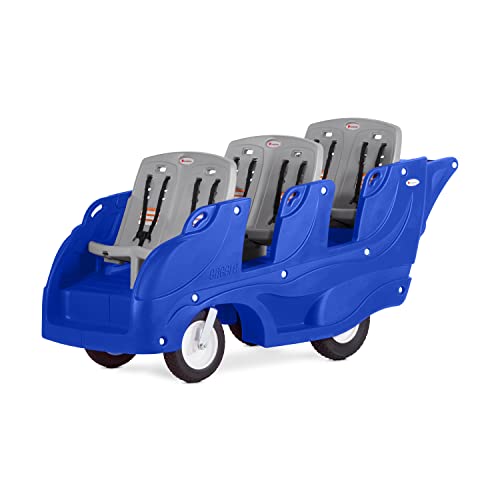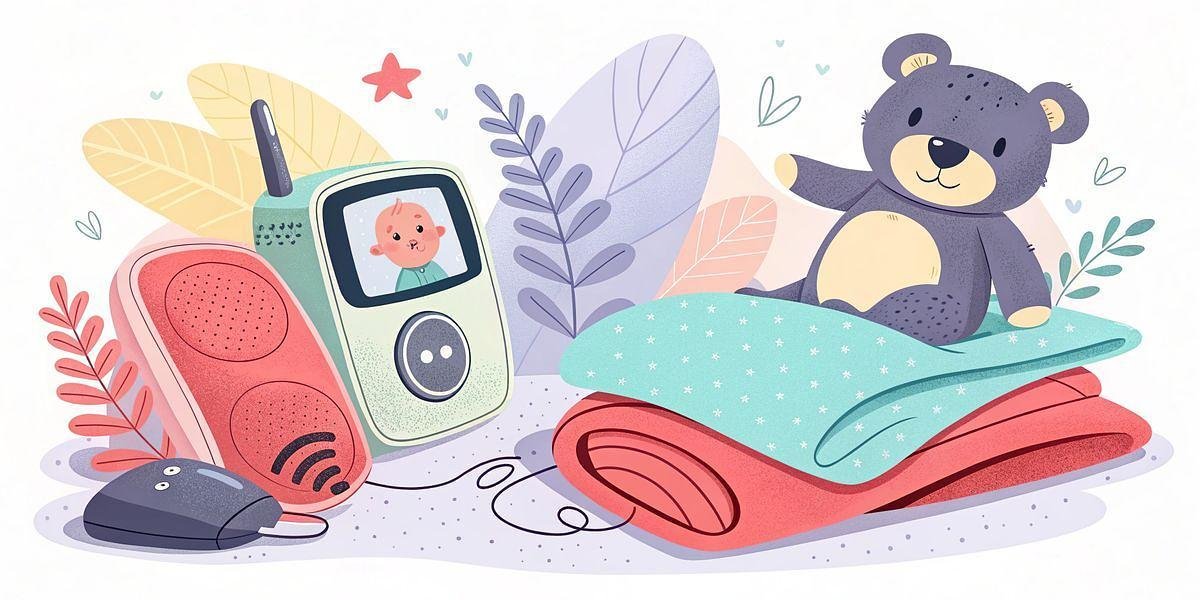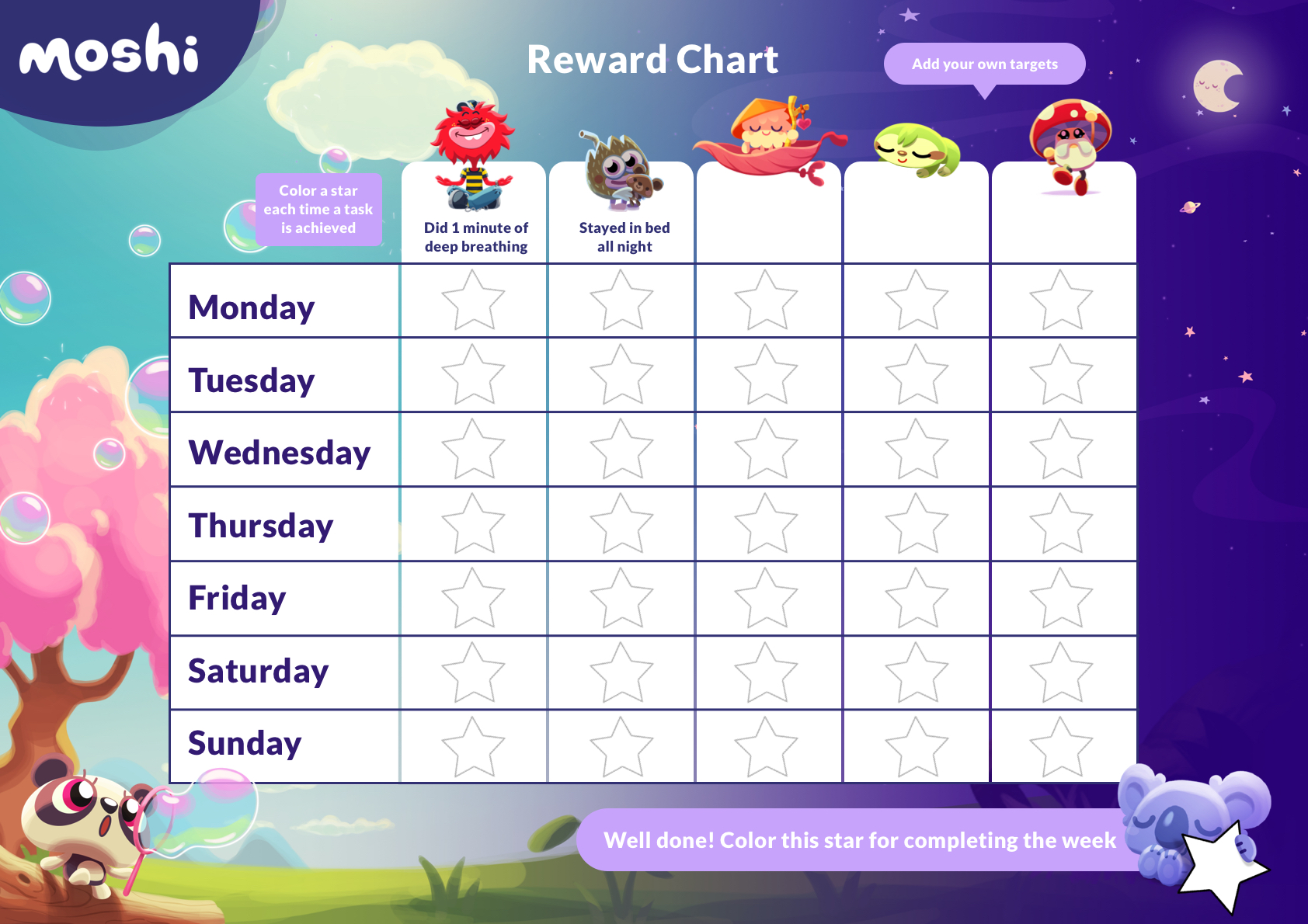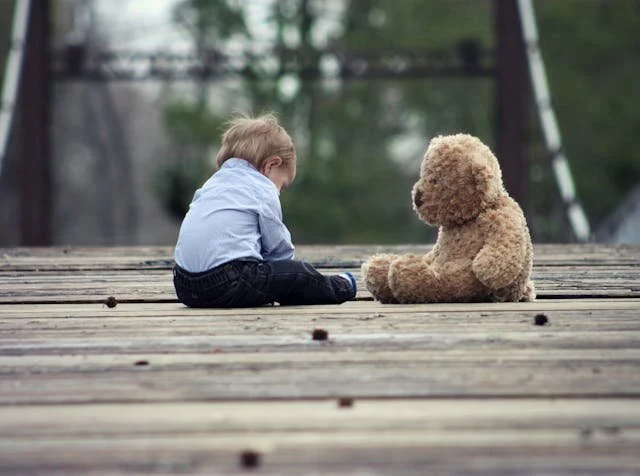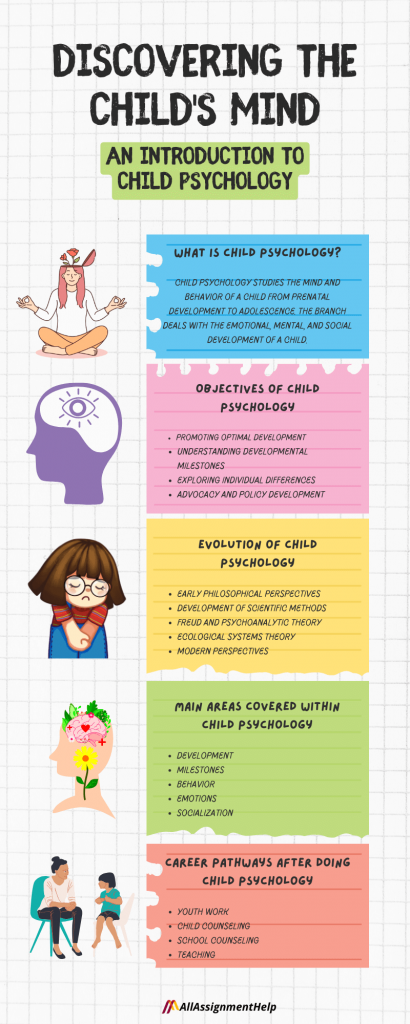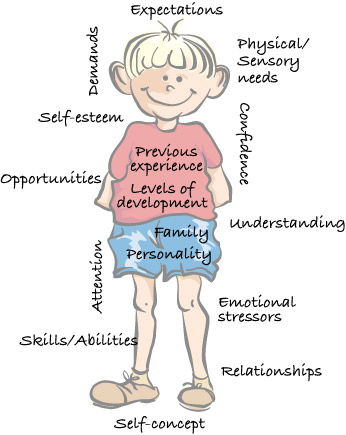You’ve just welcomed a precious little one into your life, and like any caring parent, you’re navigating the world of baby sleep. You’ve probably found yourself wondering about the safest and most comfortable sleeping arrangements for your baby.
One question that often arises is whether a baby can sleep in a stroller bassinet overnight. It’s a topic that demands your attention because ensuring a good night’s sleep for your baby means peace of mind for you. Imagine a night where your baby sleeps soundly, giving you the rest you need.
Before you make any decisions, it’s crucial to understand the benefits, risks, and expert recommendations regarding stroller bassinets for overnight sleep. As you dive into this article, you’ll uncover insights that could transform bedtime for both you and your baby. Let’s explore whether a stroller bassinet is the right choice for those long, restful nights.
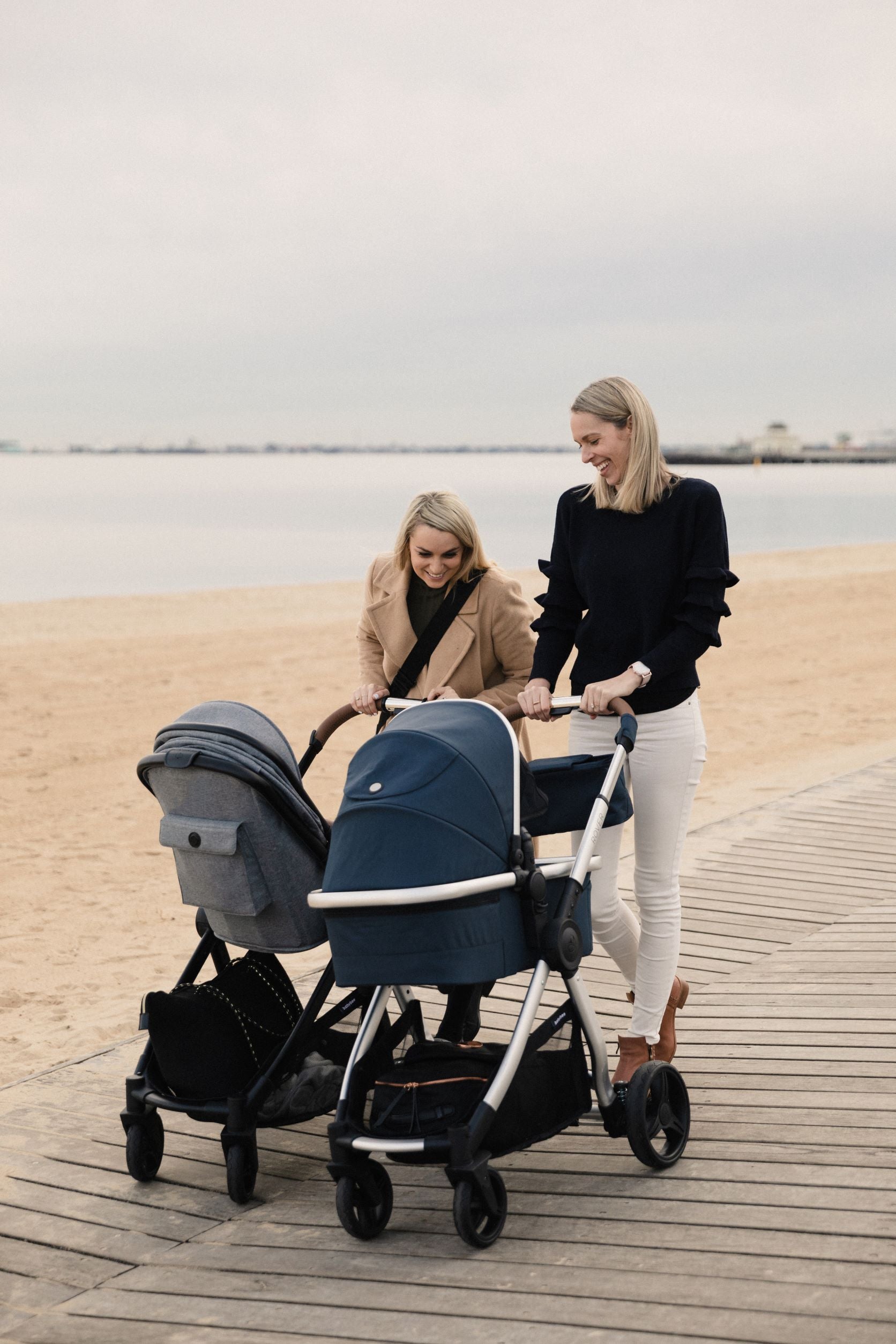
Safety Considerations
Ensuring safety is crucial when considering a stroller bassinet for overnight sleep. Firm mattresses and breathable, well-ventilated designs help reduce overheating and suffocation risks. Always supervise until you confirm that the bassinet is expressly designed and approved for overnight sleep by its manufacturer.
Letting your baby sleep in a stroller bassinet overnight might seem convenient, but consider the following:
Risk of Suffocation or Entrapment
Some stroller carrycots are not built—or certified—for unattended sleep. Soft sides, extra padding, or ill-fitting sheets can increase suffocation risk. Use only the included firm mattress and fitted sheet; avoid aftermarket add-ons[6][7][1].
Overheating
Covering a bassinet with blankets, canopies, or weather shields can trap heat and limit airflow. Overheating is a known risk factor in sleep-related infant deaths[1][3].
Instability and Movement
Strollers can move or tip if nudged or on uneven surfaces. For overnight sleep, use a manufacturer-approved stand or a stationary, locked frame on a level surface. U.S. rules require infant sleep products to be flat (≤10° incline)[4][5].
Limited Service Life
Bassinets are temporary. Stop use when the infant reaches the product’s weight limit or can push up/roll over—whichever comes first[6].
Not All Models Are Approved
Many stroller bassinets are not approved for overnight sleep. Some brands (e.g., UPPAbaby, Mockingbird) approve overnight use only with their stand; other carrycots explicitly are not approved. Always check your exact model’s manual or support page[10][11].
Guidelines for Safe Sleep
These principles apply whether you use a manufacturer-approved stroller bassinet, a crib, a bedside sleeper, or a play yard:
Ensure Proper Air Circulation
Allow unobstructed airflow; avoid draping items over the bassinet. Adequate ventilation helps prevent overheating[3].
Check Bassinet Stability
Use on a stable base and lock wheels if applicable. Follow manufacturer assembly steps and recheck fasteners periodically[7].
Use a Firm, Flat Mattress
Infant sleep products in the U.S. must be flat (≤10°) and compliant with safety standards[4][6]. Avoid inclined products and wedges.
Keep the Bassinet Clutter-Free
No toys, pillows, blankets, bumpers, or positioners. Use a fitted sheet only[1].
Monitor Temperature and Comfort
Dress your baby in light layers or a sleep sack to match room temperature; avoid over-bundling[3].
Follow Manufacturer Instructions
Confirm that your specific bassinet is approved for overnight sleep and follow weight/age limits and stand requirements[10][11].
Know What’s Not for Sleep
Car seats, swings, bouncers, and strollers in motion are not recommended for routine sleep. If baby falls asleep in one, transfer to a firm, flat sleep surface as soon as possible[8][15].
Alternative Sleep Solutions
Looking beyond a stroller bassinet? Consider these options that, when compliant with U.S. rules and used as directed, can provide safer overnight sleep:
1. Bedside Sleepers
Attach to the side of your bed but provide a separate sleep surface. In the U.S., they must meet 16 CFR Part 1222 (ASTM F2906). AAP still recommends room-sharing—not bed-sharing—for at least 6 months[12][1].
2. Cribs
Offer a stable, long-term solution. Use a firm mattress and fitted sheet only. Avoid bumpers and soft bedding[1][14].
3. Play Yards
Portable and versatile. Ensure compliance with 16 CFR Part 1221 (ASTM F406) and follow the manual’s bassinet insert rules if included[13].
4. Standalone Bassinets
Compact and designed for newborns. Look for compliance with 16 CFR Part 1218 (ASTM F2194). Stop use at the stated limit[6].
5. Baby “Nests”/Loungers (Important!)
Not recommended for sleep in the U.S. Use only for awake, supervised time. AAP and CPSC advise against soft, padded sleep surfaces and products that are not compliant infant sleep products[1][14].
6. Inclined or Rocking Sleepers
Do not use for infant sleep. The Safe Sleep for Babies Act bans inclined sleepers (>10°) and crib bumpers nationwide[9].
Expert Opinions
Experts discuss if babies can sleep overnight in stroller bassinets. Their consensus: use only products that meet U.S. safety standards and are explicitly approved by the manufacturer for unattended sleep. The sleep surface should be firm and flat (≤10°), with no soft bedding[1][4][6].
What Pediatricians Recommend
Pediatric guidance centers on a firm, flat, separate sleep surface and room-sharing for at least 6 months. Avoid inclined products and bed-sharing due to elevated risk[1][2].
Manufacturer Approvals Matter
Some stroller bassinets are approved for overnight sleep (typically when used with a stand). For example, UPPAbaby and Mockingbird provide explicit overnight-sleep guidance for their bassinets when used as directed[10][11]. Others are not approved—always check your exact model.
Safety Standards to Consider
Look for compliance with 16 CFR Part 1218 (ASTM F2194). Products marketed for infant sleep but not already covered by a sleep standard must satisfy 16 CFR Part 1236 and be ≤10° incline[4][6].

Frequently Asked Questions
Is it safe for a baby to sleep overnight in a stroller bassinet?
Only if the manufacturer explicitly approves it for overnight use, it lies flat on a firm surface with a snug fitted sheet, and it’s used on a stable stand or locked frame; otherwise choose a crib, standalone bassinet, play yard, or bedside sleeper that meets U.S. standards[1][4][6].
Are all stroller bassinets suitable for overnight sleep?
No. Many are not. Check the manual or the maker’s support page for your specific model; some brands approve overnight use only when paired with a dedicated stand[10][11].
What features should a stroller bassinet have for overnight sleep?
A firm, flat mattress; adequate ventilation; secure attachment/locking; and explicit manufacturer approval for overnight sleep. U.S. products marketed for infant sleep must be ≤10° incline and comply with federal safety standards[4][6].
Can a stroller bassinet replace a traditional crib?
Not for long-term use. Bassinets are short-term solutions. Plan to transition to a crib or compliant play yard as baby grows, while continuing to room-share (not bed-share) for at least the first 6 months[1].
If my baby falls asleep in a car seat or swing, can I leave them there overnight?
No. Car seats and other sitting devices are not recommended for routine sleep. Move baby to a firm, flat sleep surface as soon as it’s safe to do so[8][15].
Conclusion
Choosing where your baby sleeps affects their safety. Stroller bassinets offer convenience but aren’t automatically suitable for unattended overnight sleep. If—and only if—your model is explicitly approved for overnight use and used flat on a stable stand or locked frame with the included mattress and a fitted sheet, it can be part of a safe sleep plan. Otherwise, opt for a crib, bedside sleeper, or play yard that meets U.S. standards and follow AAP guidance.
Make informed decisions, follow the manual, and keep the sleep environment simple and flat. When in doubt, review the references below and consult your pediatrician. Peaceful nights start with safe sleep.
References
- American Academy of Pediatrics (AAP). “Sleep-Related Infant Deaths: Updated 2022 Recommendations for Reducing Infant Deaths in the Sleep Environment.” Pediatrics, 2022. Link
- AAP Technical Report. “Evidence Base for 2022 Updated Recommendations for a Safe Infant Sleeping Environment to Reduce the Risk of Sleep-Related Infant Deaths.” Pediatrics, 2022. Link
- HealthyChildren.org (AAP). “How to Keep Your Sleeping Baby Safe: AAP Policy Explained.” 2022–current. Link
- Electronic Code of Federal Regulations. “16 CFR Part 1236 — Safety Standard for Infant Sleep Products.” Link
- CPSC News Release. “CPSC’s New Federal Infant Sleep Products Safety Standard Takes Effect.” July 2022. Link
- Electronic Code of Federal Regulations. “16 CFR Part 1218 — Safety Standard for Bassinets and Cradles (incorporates ASTM F2194).” Link
- CPSC Business Guidance. “Bassinets and Cradles.” Link
- CDC. “Providing Care for Babies to Sleep Safely.” 2024. Link
- Congress.gov. “Safe Sleep for Babies Act of 2021 (Public Law 117-126).” Enacted May 16, 2022. Link
- UPPAbaby Support. “Is the bassinet safe for overnight sleep?” 2025. Link
- Mockingbird Help. “Bassinet + Stand sleep safety and compliance.” 2025. Link
- Electronic Code of Federal Regulations. “16 CFR Part 1222 — Safety Standard for Bedside Sleepers (ASTM F2906).” Link
- Electronic Code of Federal Regulations. “16 CFR Part 1221 — Safety Standard for Play Yards (ASTM F406).” Link
- CPSC. “Safe Sleep – Cribs and Infant Products.” Link
- CPSC News Release. “CPSC Cautions Consumers Not to Use Inclined Infant Sleep Products.” 2020. Link
Stroller bassinets offer a cozy, flat space for newborns and can be convenient when moving a sleeping baby. When—and only when—approved for overnight sleep by the manufacturer and used as directed, a bassinet can be a practical short-term sleep solution that supports room-sharing and close observation[1][10][11].
Portability and Convenience
Approved stroller bassinets (with required stand) can move from stroller to bedside without waking baby, useful for travel and small spaces[10][11].
Space-Saving Solution
Compared with a full-size crib, a bassinet has a smaller footprint, which can be helpful in apartments or when room-sharing[1].
Ease of Monitoring
Keeping baby nearby (same room, separate safe surface) supports feeding and observation, especially in the first 6 months[1]
Potential Risks
Letting your baby sleep in a stroller bassinet overnight might seem convenient, but consider the following:
Risk of Suffocation or Entrapment
Some stroller carrycots are not built—or certified—for unattended sleep. Soft sides, extra padding, or ill-fitting sheets can increase suffocation risk. Use only the included firm mattress and fitted sheet; avoid aftermarket add-ons[6][7][1].
Overheating
Covering a bassinet with blankets, canopies, or weather shields can trap heat and limit airflow. Overheating is a known risk factor in sleep-related infant deaths[1][3].
Instability and Movement
Strollers can move or tip if nudged or on uneven surfaces. For overnight sleep, use a manufacturer-approved stand or a stationary, locked frame on a level surface. U.S. rules require infant sleep products to be flat (≤10° incline)[4][5].
Limited Service Life
Bassinets are temporary. Stop use when the infant reaches the product’s weight limit or can push up/roll over—whichever comes first[6].
Not All Models Are Approved
Many stroller bassinets are not approved for overnight sleep. Some brands (e.g., UPPAbaby, Mockingbird) approve overnight use only with their stand; other carrycots explicitly are not approved. Always check your exact model’s manual or support page[10][11].
Guidelines for Safe Sleep
These principles apply whether you use a manufacturer-approved stroller bassinet, a crib, a bedside sleeper, or a play yard:
Ensure Proper Air Circulation
Allow unobstructed airflow; avoid draping items over the bassinet. Adequate ventilation helps prevent overheating[3].
Check Bassinet Stability
Use on a stable base and lock wheels if applicable. Follow manufacturer assembly steps and recheck fasteners periodically[7].
Use a Firm, Flat Mattress
Infant sleep products in the U.S. must be flat (≤10°) and compliant with safety standards[4][6]. Avoid inclined products and wedges.
Keep the Bassinet Clutter-Free
No toys, pillows, blankets, bumpers, or positioners. Use a fitted sheet only[1].
Monitor Temperature and Comfort
Dress your baby in light layers or a sleep sack to match room temperature; avoid over-bundling[3].
Follow Manufacturer Instructions
Confirm that your specific bassinet is approved for overnight sleep and follow weight/age limits and stand requirements[10][11].
Know What’s Not for Sleep
Car seats, swings, bouncers, and strollers in motion are not recommended for routine sleep. If baby falls asleep in one, transfer to a firm, flat sleep surface as soon as possible[8][15].
Alternative Sleep Solutions
Looking beyond a stroller bassinet? Consider these options that, when compliant with U.S. rules and used as directed, can provide safer overnight sleep:
1. Bedside Sleepers
Attach to the side of your bed but provide a separate sleep surface. In the U.S., they must meet 16 CFR Part 1222 (ASTM F2906). AAP still recommends room-sharing—not bed-sharing—for at least 6 months[12][1].
2. Cribs
Offer a stable, long-term solution. Use a firm mattress and fitted sheet only. Avoid bumpers and soft bedding[1][14].
3. Play Yards
Portable and versatile. Ensure compliance with 16 CFR Part 1221 (ASTM F406) and follow the manual’s bassinet insert rules if included[13].
4. Standalone Bassinets
Compact and designed for newborns. Look for compliance with 16 CFR Part 1218 (ASTM F2194). Stop use at the stated limit[6].
5. Baby “Nests”/Loungers (Important!)
Not recommended for sleep in the U.S. Use only for awake, supervised time. AAP and CPSC advise against soft, padded sleep surfaces and products that are not compliant infant sleep products[1][14].
6. Inclined or Rocking Sleepers
Do not use for infant sleep. The Safe Sleep for Babies Act bans inclined sleepers (>10°) and crib bumpers nationwide[9].
Expert Opinions
Experts discuss if babies can sleep overnight in stroller bassinets. Their consensus: use only products that meet U.S. safety standards and are explicitly approved by the manufacturer for unattended sleep. The sleep surface should be firm and flat (≤10°), with no soft bedding[1][4][6].
What Pediatricians Recommend
Pediatric guidance centers on a firm, flat, separate sleep surface and room-sharing for at least 6 months. Avoid inclined products and bed-sharing due to elevated risk[1][2].
Manufacturer Approvals Matter
Some stroller bassinets are approved for overnight sleep (typically when used with a stand). For example, UPPAbaby and Mockingbird provide explicit overnight-sleep guidance for their bassinets when used as directed[10][11]. Others are not approved—always check your exact model.
Safety Standards to Consider
Look for compliance with 16 CFR Part 1218 (ASTM F2194). Products marketed for infant sleep but not already covered by a sleep standard must satisfy 16 CFR Part 1236 and be ≤10° incline[4][6].

Frequently Asked Questions
Is it safe for a baby to sleep overnight in a stroller bassinet?
Only if the manufacturer explicitly approves it for overnight use, it lies flat on a firm surface with a snug fitted sheet, and it’s used on a stable stand or locked frame; otherwise choose a crib, standalone bassinet, play yard, or bedside sleeper that meets U.S. standards[1][4][6].
Are all stroller bassinets suitable for overnight sleep?
No. Many are not. Check the manual or the maker’s support page for your specific model; some brands approve overnight use only when paired with a dedicated stand[10][11].
What features should a stroller bassinet have for overnight sleep?
A firm, flat mattress; adequate ventilation; secure attachment/locking; and explicit manufacturer approval for overnight sleep. U.S. products marketed for infant sleep must be ≤10° incline and comply with federal safety standards[4][6].
Can a stroller bassinet replace a traditional crib?
Not for long-term use. Bassinets are short-term solutions. Plan to transition to a crib or compliant play yard as baby grows, while continuing to room-share (not bed-share) for at least the first 6 months[1].
If my baby falls asleep in a car seat or swing, can I leave them there overnight?
No. Car seats and other sitting devices are not recommended for routine sleep. Move baby to a firm, flat sleep surface as soon as it’s safe to do so[8][15].
Conclusion
Choosing where your baby sleeps affects their safety. Stroller bassinets offer convenience but aren’t automatically suitable for unattended overnight sleep. If—and only if—your model is explicitly approved for overnight use and used flat on a stable stand or locked frame with the included mattress and a fitted sheet, it can be part of a safe sleep plan. Otherwise, opt for a crib, bedside sleeper, or play yard that meets U.S. standards and follow AAP guidance.
Make informed decisions, follow the manual, and keep the sleep environment simple and flat. When in doubt, review the references below and consult your pediatrician. Peaceful nights start with safe sleep.
References
- American Academy of Pediatrics (AAP). “Sleep-Related Infant Deaths: Updated 2022 Recommendations for Reducing Infant Deaths in the Sleep Environment.” Pediatrics, 2022. Link
- AAP Technical Report. “Evidence Base for 2022 Updated Recommendations for a Safe Infant Sleeping Environment to Reduce the Risk of Sleep-Related Infant Deaths.” Pediatrics, 2022. Link
- HealthyChildren.org (AAP). “How to Keep Your Sleeping Baby Safe: AAP Policy Explained.” 2022–current. Link
- Electronic Code of Federal Regulations. “16 CFR Part 1236 — Safety Standard for Infant Sleep Products.” Link
- CPSC News Release. “CPSC’s New Federal Infant Sleep Products Safety Standard Takes Effect.” July 2022. Link
- Electronic Code of Federal Regulations. “16 CFR Part 1218 — Safety Standard for Bassinets and Cradles (incorporates ASTM F2194).” Link
- CPSC Business Guidance. “Bassinets and Cradles.” Link
- CDC. “Providing Care for Babies to Sleep Safely.” 2024. Link
- Congress.gov. “Safe Sleep for Babies Act of 2021 (Public Law 117-126).” Enacted May 16, 2022. Link
- UPPAbaby Support. “Is the bassinet safe for overnight sleep?” 2025. Link
- Mockingbird Help. “Bassinet + Stand sleep safety and compliance.” 2025. Link
- Electronic Code of Federal Regulations. “16 CFR Part 1222 — Safety Standard for Bedside Sleepers (ASTM F2906).” Link
- Electronic Code of Federal Regulations. “16 CFR Part 1221 — Safety Standard for Play Yards (ASTM F406).” Link
- CPSC. “Safe Sleep – Cribs and Infant Products.” Link
- CPSC News Release. “CPSC Cautions Consumers Not to Use Inclined Infant Sleep Products.” 2020. Link
Use a stroller bassinet for overnight sleep only if the manufacturer explicitly approves it for overnight use, it lies flat on a stable stand or stroller frame with brakes locked, and it complies with applicable U.S. safety rules—specifically the federal infant sleep products rule (16 CFR Part 1236) and the bassinets/cradles standard (16 CFR Part 1218, which incorporates ASTM F2194)[4][6][5]. The American Academy of Pediatrics (AAP) recommends placing infants on their backs on a firm, flat, non-inclined surface in a crib, bassinet, play yard, or bedside sleeper and room-sharing (not bed-sharing) for at least the first 6 months, ideally up to 1 year[1][3].
Ensure Proper Ventilation
A well-ventilated bassinet helps prevent overheating. Look for mesh panels or open sides and avoid covering the bassinet with blankets, canopies, or stroller rain covers while the baby sleeps[3][14].
Check Stability and Structure
Confirm that the bassinet locks securely to its stand or stroller frame and does not wobble. Follow the manufacturer’s instructions for assembly and use. If a stand is required for overnight approval (common for many brands), use that stand every time[10][11].
Use a Firm, Flat Mattress
Use only the original, firm mattress pad and a snug fitted sheet designed for that bassinet. Don’t add aftermarket mattresses, wedges, pillows, or soft bedding[1][14].
Back to Sleep, Every Sleep
Always place your baby on their back to sleep. Supine positioning lowers the risk of sleep-related infant death[1][2].
Keep the Bassinet Bare
Keep the sleep space free of toys, pillows, bumpers, loose blankets, and positioners. A wearable blanket (sleep sack) is a safer way to keep baby warm[1][3].
Mind the Environment
Place the bassinet in a smoke-free, hazard-free area, away from cords and heat sources. Maintain a comfortable room temperature and suitable clothing layers to avoid overheating[3][8].
Inspect Regularly
Routinely check for wear, loose parts, or damage. Follow the product’s weight and development limits (for example, stop when the infant can push up on hands and knees), per the manual[7].

Benefits of Bassinet Use
Stroller bassinets offer a cozy, flat space for newborns and can be convenient when moving a sleeping baby. When—and only when—approved for overnight sleep by the manufacturer and used as directed, a bassinet can be a practical short-term sleep solution that supports room-sharing and close observation[1][10][11].
Portability and Convenience
Approved stroller bassinets (with required stand) can move from stroller to bedside without waking baby, useful for travel and small spaces[10][11].
Space-Saving Solution
Compared with a full-size crib, a bassinet has a smaller footprint, which can be helpful in apartments or when room-sharing[1].
Ease of Monitoring
Keeping baby nearby (same room, separate safe surface) supports feeding and observation, especially in the first 6 months[1]
Potential Risks
Letting your baby sleep in a stroller bassinet overnight might seem convenient, but consider the following:
Risk of Suffocation or Entrapment
Some stroller carrycots are not built—or certified—for unattended sleep. Soft sides, extra padding, or ill-fitting sheets can increase suffocation risk. Use only the included firm mattress and fitted sheet; avoid aftermarket add-ons[6][7][1].
Overheating
Covering a bassinet with blankets, canopies, or weather shields can trap heat and limit airflow. Overheating is a known risk factor in sleep-related infant deaths[1][3].
Instability and Movement
Strollers can move or tip if nudged or on uneven surfaces. For overnight sleep, use a manufacturer-approved stand or a stationary, locked frame on a level surface. U.S. rules require infant sleep products to be flat (≤10° incline)[4][5].
Limited Service Life
Bassinets are temporary. Stop use when the infant reaches the product’s weight limit or can push up/roll over—whichever comes first[6].
Not All Models Are Approved
Many stroller bassinets are not approved for overnight sleep. Some brands (e.g., UPPAbaby, Mockingbird) approve overnight use only with their stand; other carrycots explicitly are not approved. Always check your exact model’s manual or support page[10][11].
Guidelines for Safe Sleep
These principles apply whether you use a manufacturer-approved stroller bassinet, a crib, a bedside sleeper, or a play yard:
Ensure Proper Air Circulation
Allow unobstructed airflow; avoid draping items over the bassinet. Adequate ventilation helps prevent overheating[3].
Check Bassinet Stability
Use on a stable base and lock wheels if applicable. Follow manufacturer assembly steps and recheck fasteners periodically[7].
Use a Firm, Flat Mattress
Infant sleep products in the U.S. must be flat (≤10°) and compliant with safety standards[4][6]. Avoid inclined products and wedges.
Keep the Bassinet Clutter-Free
No toys, pillows, blankets, bumpers, or positioners. Use a fitted sheet only[1].
Monitor Temperature and Comfort
Dress your baby in light layers or a sleep sack to match room temperature; avoid over-bundling[3].
Follow Manufacturer Instructions
Confirm that your specific bassinet is approved for overnight sleep and follow weight/age limits and stand requirements[10][11].
Know What’s Not for Sleep
Car seats, swings, bouncers, and strollers in motion are not recommended for routine sleep. If baby falls asleep in one, transfer to a firm, flat sleep surface as soon as possible[8][15].
Alternative Sleep Solutions
Looking beyond a stroller bassinet? Consider these options that, when compliant with U.S. rules and used as directed, can provide safer overnight sleep:
1. Bedside Sleepers
Attach to the side of your bed but provide a separate sleep surface. In the U.S., they must meet 16 CFR Part 1222 (ASTM F2906). AAP still recommends room-sharing—not bed-sharing—for at least 6 months[12][1].
2. Cribs
Offer a stable, long-term solution. Use a firm mattress and fitted sheet only. Avoid bumpers and soft bedding[1][14].
3. Play Yards
Portable and versatile. Ensure compliance with 16 CFR Part 1221 (ASTM F406) and follow the manual’s bassinet insert rules if included[13].
4. Standalone Bassinets
Compact and designed for newborns. Look for compliance with 16 CFR Part 1218 (ASTM F2194). Stop use at the stated limit[6].
5. Baby “Nests”/Loungers (Important!)
Not recommended for sleep in the U.S. Use only for awake, supervised time. AAP and CPSC advise against soft, padded sleep surfaces and products that are not compliant infant sleep products[1][14].
6. Inclined or Rocking Sleepers
Do not use for infant sleep. The Safe Sleep for Babies Act bans inclined sleepers (>10°) and crib bumpers nationwide[9].
Expert Opinions
Experts discuss if babies can sleep overnight in stroller bassinets. Their consensus: use only products that meet U.S. safety standards and are explicitly approved by the manufacturer for unattended sleep. The sleep surface should be firm and flat (≤10°), with no soft bedding[1][4][6].
What Pediatricians Recommend
Pediatric guidance centers on a firm, flat, separate sleep surface and room-sharing for at least 6 months. Avoid inclined products and bed-sharing due to elevated risk[1][2].
Manufacturer Approvals Matter
Some stroller bassinets are approved for overnight sleep (typically when used with a stand). For example, UPPAbaby and Mockingbird provide explicit overnight-sleep guidance for their bassinets when used as directed[10][11]. Others are not approved—always check your exact model.
Safety Standards to Consider
Look for compliance with 16 CFR Part 1218 (ASTM F2194). Products marketed for infant sleep but not already covered by a sleep standard must satisfy 16 CFR Part 1236 and be ≤10° incline[4][6].

Frequently Asked Questions
Is it safe for a baby to sleep overnight in a stroller bassinet?
Only if the manufacturer explicitly approves it for overnight use, it lies flat on a firm surface with a snug fitted sheet, and it’s used on a stable stand or locked frame; otherwise choose a crib, standalone bassinet, play yard, or bedside sleeper that meets U.S. standards[1][4][6].
Are all stroller bassinets suitable for overnight sleep?
No. Many are not. Check the manual or the maker’s support page for your specific model; some brands approve overnight use only when paired with a dedicated stand[10][11].
What features should a stroller bassinet have for overnight sleep?
A firm, flat mattress; adequate ventilation; secure attachment/locking; and explicit manufacturer approval for overnight sleep. U.S. products marketed for infant sleep must be ≤10° incline and comply with federal safety standards[4][6].
Can a stroller bassinet replace a traditional crib?
Not for long-term use. Bassinets are short-term solutions. Plan to transition to a crib or compliant play yard as baby grows, while continuing to room-share (not bed-share) for at least the first 6 months[1].
If my baby falls asleep in a car seat or swing, can I leave them there overnight?
No. Car seats and other sitting devices are not recommended for routine sleep. Move baby to a firm, flat sleep surface as soon as it’s safe to do so[8][15].
Conclusion
Choosing where your baby sleeps affects their safety. Stroller bassinets offer convenience but aren’t automatically suitable for unattended overnight sleep. If—and only if—your model is explicitly approved for overnight use and used flat on a stable stand or locked frame with the included mattress and a fitted sheet, it can be part of a safe sleep plan. Otherwise, opt for a crib, bedside sleeper, or play yard that meets U.S. standards and follow AAP guidance.
Make informed decisions, follow the manual, and keep the sleep environment simple and flat. When in doubt, review the references below and consult your pediatrician. Peaceful nights start with safe sleep.
References
- American Academy of Pediatrics (AAP). “Sleep-Related Infant Deaths: Updated 2022 Recommendations for Reducing Infant Deaths in the Sleep Environment.” Pediatrics, 2022. Link
- AAP Technical Report. “Evidence Base for 2022 Updated Recommendations for a Safe Infant Sleeping Environment to Reduce the Risk of Sleep-Related Infant Deaths.” Pediatrics, 2022. Link
- HealthyChildren.org (AAP). “How to Keep Your Sleeping Baby Safe: AAP Policy Explained.” 2022–current. Link
- Electronic Code of Federal Regulations. “16 CFR Part 1236 — Safety Standard for Infant Sleep Products.” Link
- CPSC News Release. “CPSC’s New Federal Infant Sleep Products Safety Standard Takes Effect.” July 2022. Link
- Electronic Code of Federal Regulations. “16 CFR Part 1218 — Safety Standard for Bassinets and Cradles (incorporates ASTM F2194).” Link
- CPSC Business Guidance. “Bassinets and Cradles.” Link
- CDC. “Providing Care for Babies to Sleep Safely.” 2024. Link
- Congress.gov. “Safe Sleep for Babies Act of 2021 (Public Law 117-126).” Enacted May 16, 2022. Link
- UPPAbaby Support. “Is the bassinet safe for overnight sleep?” 2025. Link
- Mockingbird Help. “Bassinet + Stand sleep safety and compliance.” 2025. Link
- Electronic Code of Federal Regulations. “16 CFR Part 1222 — Safety Standard for Bedside Sleepers (ASTM F2906).” Link
- Electronic Code of Federal Regulations. “16 CFR Part 1221 — Safety Standard for Play Yards (ASTM F406).” Link
- CPSC. “Safe Sleep – Cribs and Infant Products.” Link
- CPSC News Release. “CPSC Cautions Consumers Not to Use Inclined Infant Sleep Products.” 2020. Link

